There are several techniques available to evaluate delays that occur on a construction project. One commonly used technique is known as a windows schedule analysis, also referred to in construction scheduling as a “contemporaneous period schedule analysis.” A windows analysis is a retrospective schedule analysis technique that typically utilizes contemporaneous schedule updates, in conjunction with project records such as progress reports, and other contemporaneous data to identify and quantify changes or delays to the project’s as-built critical path.
This schedule analysis methodology takes into account the changes’ or delays’ relationship to past and/or concurrent events and circumstances. The windows method relies on the schedule forecast for work activities at the time schedule updates were prepared, as they reflect the current progress of the project and the contractor’s plan for project completion at various points in time. This technique allows for examining the dynamic nature of the critical path from window to window as the project progresses.
The windows analysis is generally applied to projects that use Critical Path Methodology (CPM) to schedule work activities and is aided by access to native data files. Although a windows schedule analysis can be done without native (scheduling program-based) files, these files show logic relationships between activities and are key to understanding how the contractor intended to carry out the work.
The windows schedule analysis typically begins with the planned or contract baseline construction schedule and proceeds chronologically from update to update, tracking progress along the critical and near-critical paths. The time period between schedule updates forms the window of analysis. The consultant analyzing the schedule chooses the windows based on available data, major project events, and educated judgement. By looking at the project through periods of time, or windows, delays and changes to the project’s critical path can be more readily identified, quantified, and explained. Analyzing the project on a period-by-period basis accounts for changes to the contractor’s planned sequence of work. The below graphic illustrates the periods of a typical windows analysis. It is followed by graphics showing each window of analysis.
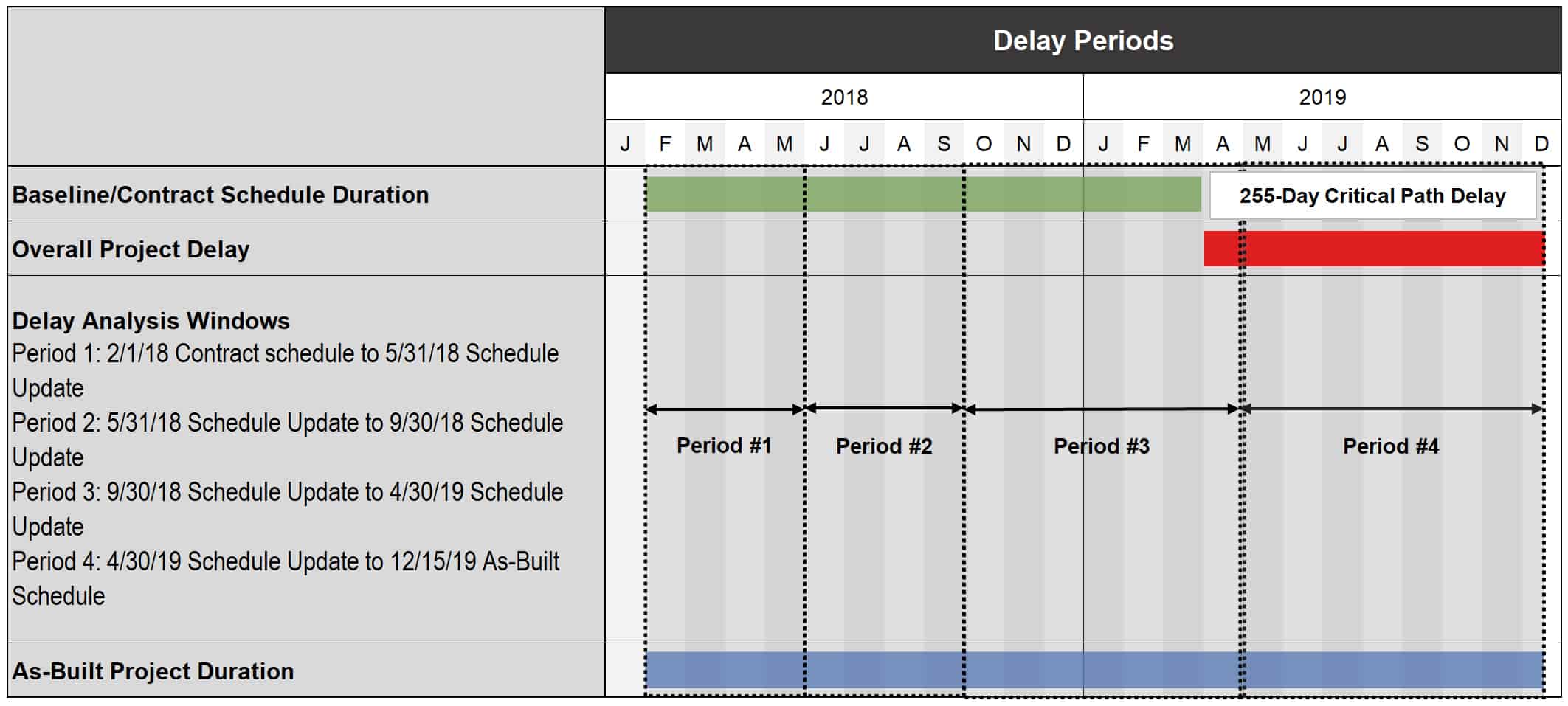
Analysis period #1 looks at delays to the project’s critical path between the contract schedule and the May 2018 schedule update:
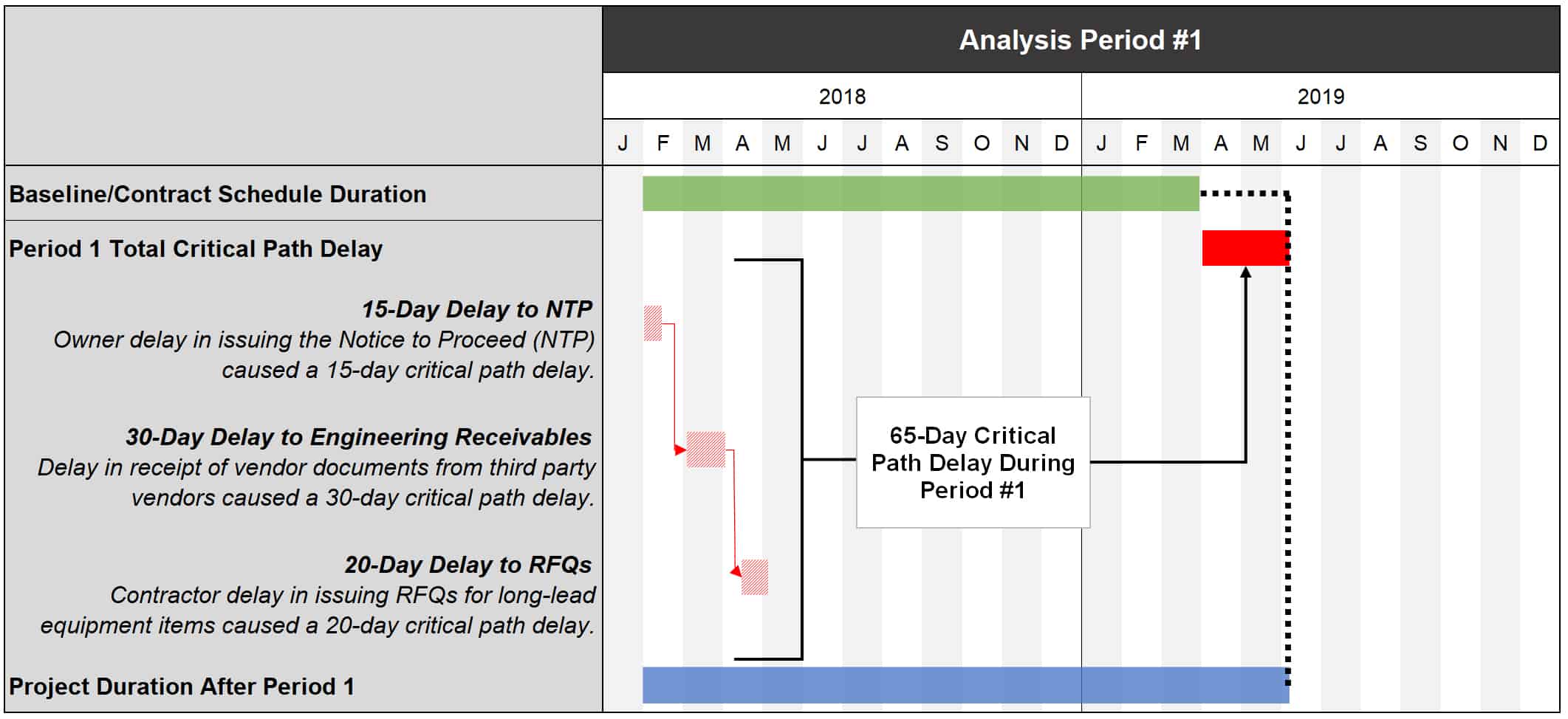
For each analysis period, the prior schedule update becomes the baseline for the analysis of the current period. This allows delays, accelerations, and critical path changes to be identified and analyzed on a period-by-period basis. Rarely is a project executed exactly as planned – often there are alterations to the planned sequence of work. Analyzing delays on a period-by-period basis allows the consultant to consider alterations to the planned work sequence that change the project’s critical path. The windows analysis methodology compares start dates, finish dates, and duration of the activities and identifies changes to schedule logic between analysis periods. As such, implementation of the windows schedule analysis depends on baseline schedule information, contemporaneous schedule updates, and as-built schedule information. The following graphics show this process continuing through windows two, three, and four.
Analysis period #2 looks at delays to the project’s critical path between the May 2018 schedule update and the September 2018 schedule update:
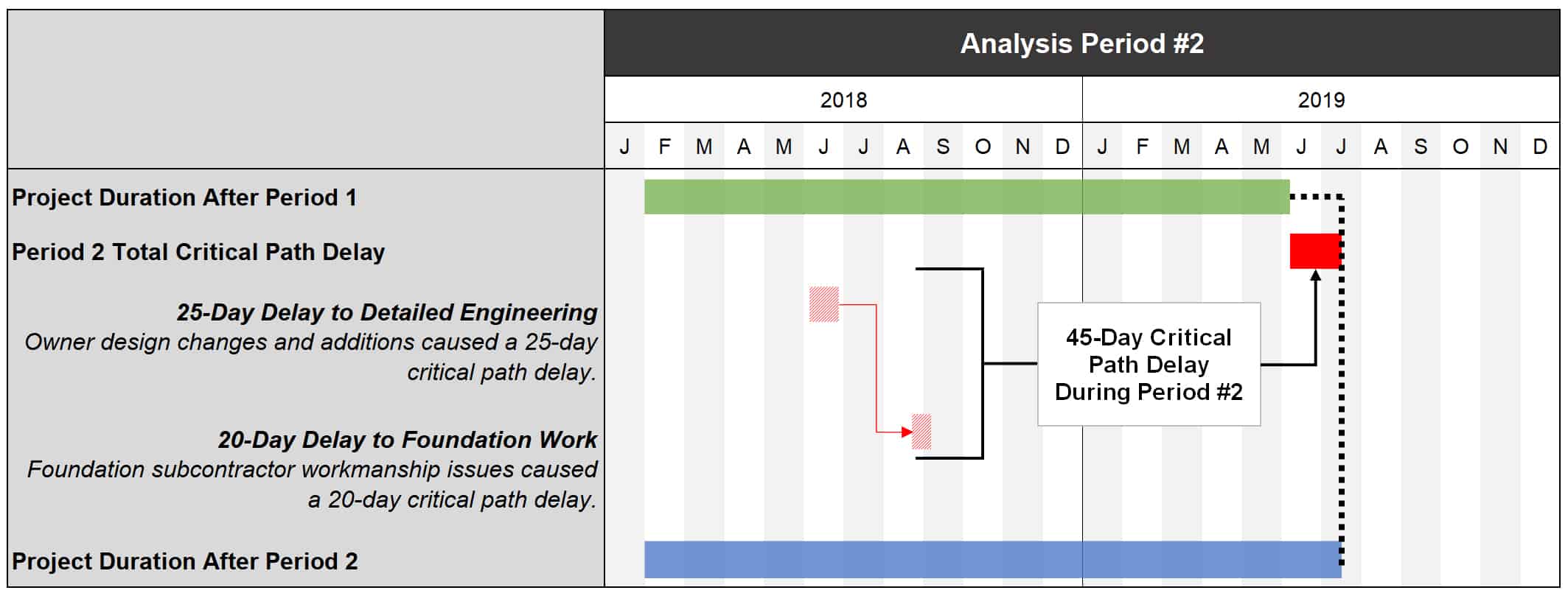
Analysis period #3 looks at delays to the project’s critical path between the September 2018 schedule update and the April 2019 schedule update:
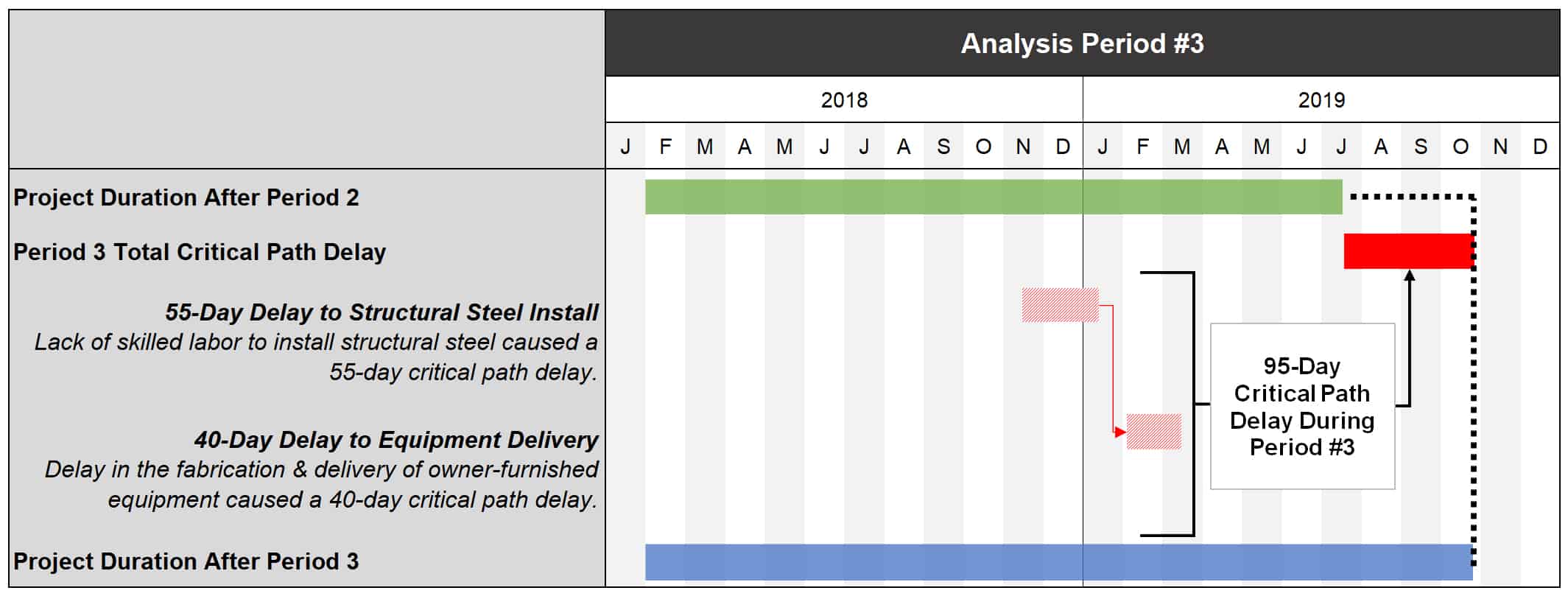
Analysis period #4 looks at delays to the project’s critical path between the April 2019 schedule update and the December 2019 as-built schedule update:
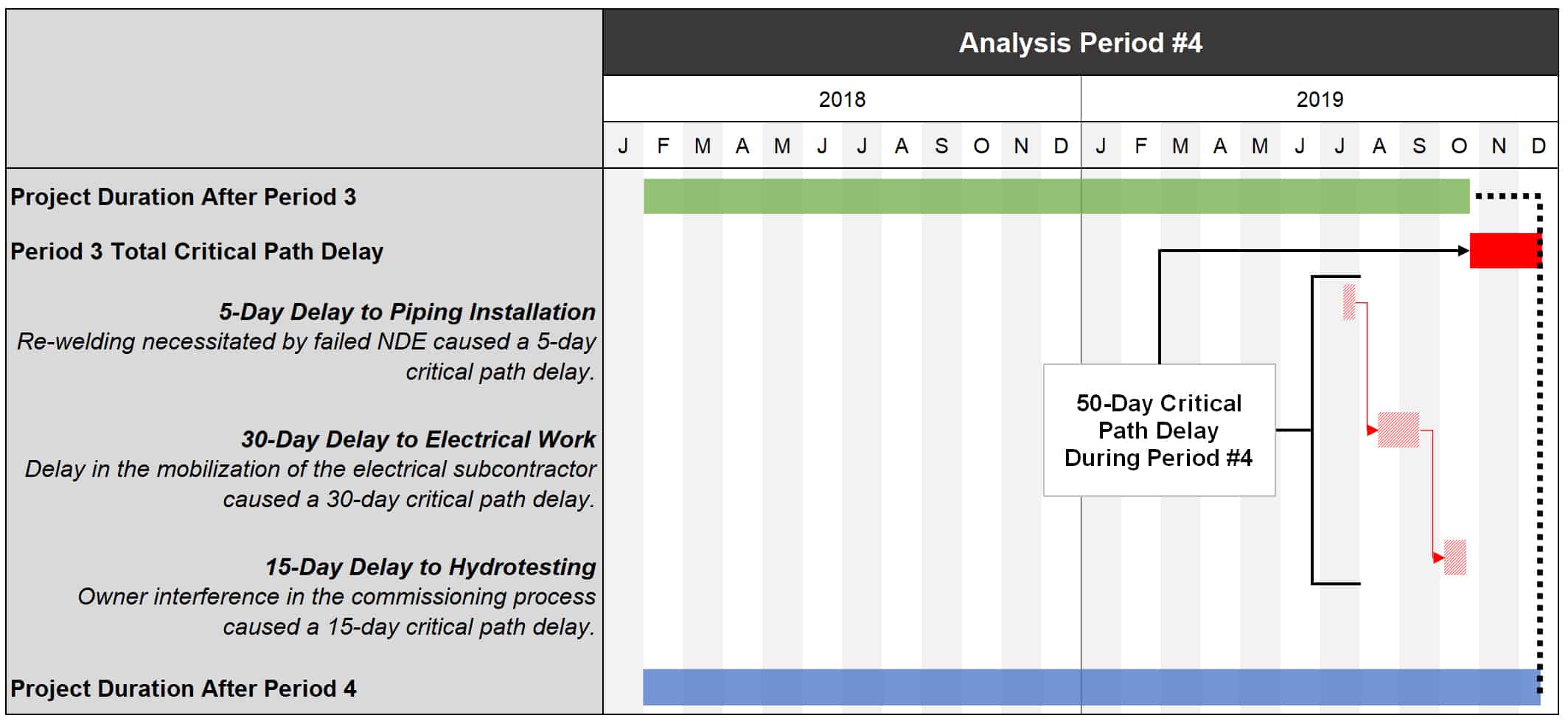
Although the windows schedule analysis is performed in a retrospective context, either shortly after a delay event occurs or after the completion date of the entire project, it is not a hindsight analysis approach. Rather, the windows schedule analysis is a forward-looking technique because the analysis generally proceeds from the beginning of a project and moves forward in time on a chronological and cumulative basis. The windows schedule analysis evaluates as-built performance information and records to determine whether delays or changes actually delayed the critical path of a project. At the conclusion of a windows analysis, there is a complete picture of delay events on a period-by-period basis. This is shown in the following summary graphic:

It should be noted that there are several important considerations for choosing an appropriate schedule analysis methodology. Each construction project is unique, and the selection of a particular schedule analysis method should be based on professional judgement, the documentation and data available, and diligent factual research and evaluation. GlassRatner has addressed schedule delay issues on hundreds of construction-related matters, and its construction experts are skilled in preparing schedule delay analyses based on available data and client requirements.

